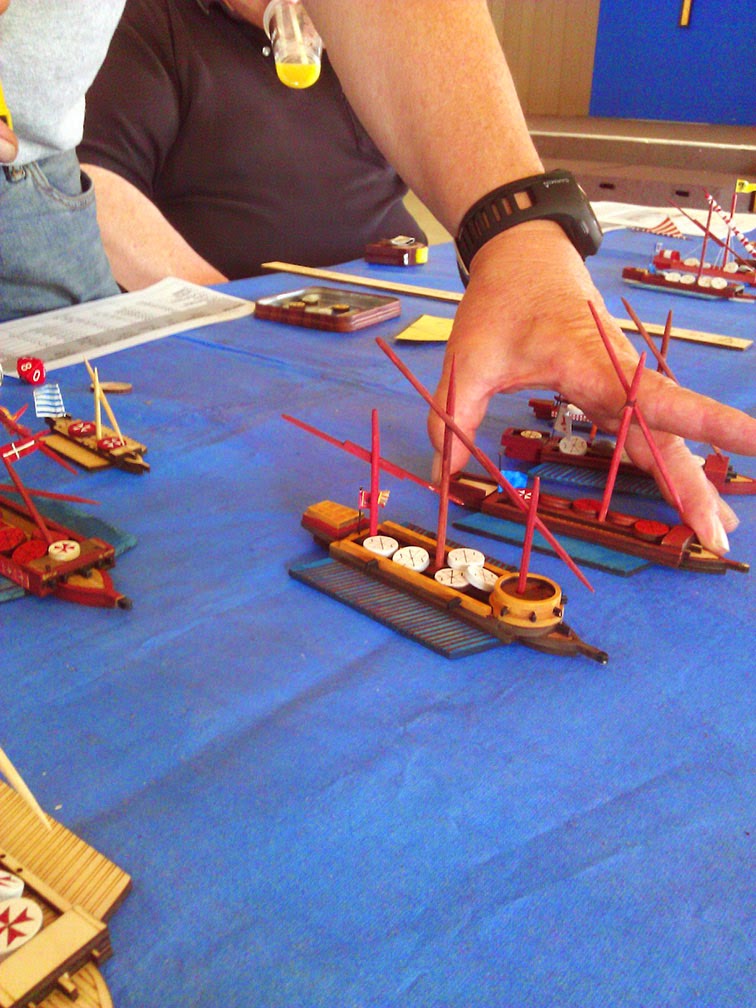Uncle Drosselmeier: “No. No! The spell will be broken if he slays
the Mouse King.”
Clara: “...and
wins the hand of a fair young maiden.”
Uncle
Drosselmeier: “Precisely.”
Clara: “Oh…
why are all the fairy stories the same?”
- Excerpt from the Nutcracker
 |
| The Rat King flanked by his soldiers! |
As Clara asks above: "Why are all the fairy
stories the same?" - I thought it was high time for the poor Mouse King to have the opportunity to win
a few battles, so I’ve leveled him up to a Rat King instead! Bring it on Nutcracker!
 |
| The tail is designed to be posed in many positions. |
Behold - the Rat King in all his Glory!
Tremble in fear of his size, that not-too-clean sword, and that tail!
Since the Nutcracker ballet seems to originate in Russia and
trickle on over to Austria and Prussia, I’ve done a mash-up of uniforms for the
Army. The King’s is based on the Austrian Officer’s uniform, with appropriate
changes to fit for tail, etc. I also went for larger “7 Years Wars” style
cuffs, because, well – that’s what they’d do in Hollywood!
The king stands 110mm high from top of base to top of crown-
a very intimidating fellow!
 |
| Highland Dwarf Clan Lord confronts the Rat king in personal combat! |
As I was designing him I gave him a medal and then thought
to myself “Hey, I want that medal too!” As a result, the Rat King sprue comes with his
medal.
 |
| Rat king Sprue with medal! |
Rat Soldiers
Like the Rat king, I've upgraded the mice from the original story to rats! The Rat soldiers' uniforms are based upon the Russian style. Simple and clean it’s really a fun uniform to paint in a myriad of colors, and as you can see, the rats tower over the poor wooden soldiers.
 |
| Rat soldiers with muskatoon and dessert fork arm variants |
Rat soldiers come with two arm variants to set them as a Muskatoon (mousekatoon?) unit, or dreadful Dessert Fork bearing Elite Grenadiers. Due to their size the standard unit of rats starts at 5 instead of 10, but can be as large as you want. Imagine a 30 rat unit - pretty much unstoppable in melee! These bad boys measure 100mm from top of base to top of Shako.
Rat soldier sprue with options- and coin!
Should you choose to build an elite Rat unit (with forks) they do not shoot, but are fast moving and get extra attacks in melee.
 |
| Scale of Rat soldier and British soldier! |
Wooden Wars Rules - Variations for the Rat King’s Army
The Rat King’s troops are huge (compared to the standard
wooden soldier) and ferocious and as such have some special rules.
1. Rat units start at 5 figures on up to as many as
you want. With a unit of up to 10 models, keep them in a single line. After
that start double/triple ranking them. You
may have a unit with a mix of muskatoon and forks, but it still counts as a firing
unit. (Aesthetic note: it looks neat if you make the back rank all forks)
2. A unit of all fork bearing rats is considered an
elite unit (Grenadiers). They are fast moving (move 2 batons per turn in line) and
get two attacks in the first round of combat, but there is no Dodgeball save in melee.
3. Due to their mass and fur, all rats get a Dodgeball save of 6+ against small arms
fire, but not cannon or melee.
4. Rat Soldier large muskatoons fire a hail of shot
at the enemy instead of one bullet. To reflect this, a unit fires 2 balls
during firing phase instead of 1. Like with cannon, balls are tossed at the same
time.
5. The Rat King has 4 attacks in melee instead of
3, and always has a Dodgeball save
of 5+.
6. If the Rat King is knocked over (defeated), the
Rat Army flees, and the battle is over.
When Can I Get a Rat Army of My Own?!
(There’s also a link tab at the top of the blog!)
Ths





















